The world has changed a lot since the original Tiguan was launched in 2007, as totally different is the relevance of Volkswagen's compact SUV to the No. 1 manufacturer in Europe.
From 150,000 units produced in its first full year, the Tiguan peaked at 91,000 assembled in 2019 at its four factories around the world (China, Mexico, Germany and Russia), meaning this is by far the model Volkswagen's best selling worldwide.
The second generation arrived on the market in early 2016 and is now updated with a new front design (radiator grille and headlamps similar to the Touareg) with more sophisticated lighting (standard LED headlamps and advanced optional intelligent lighting systems) and rear retouched (with the name Tiguan in the center).
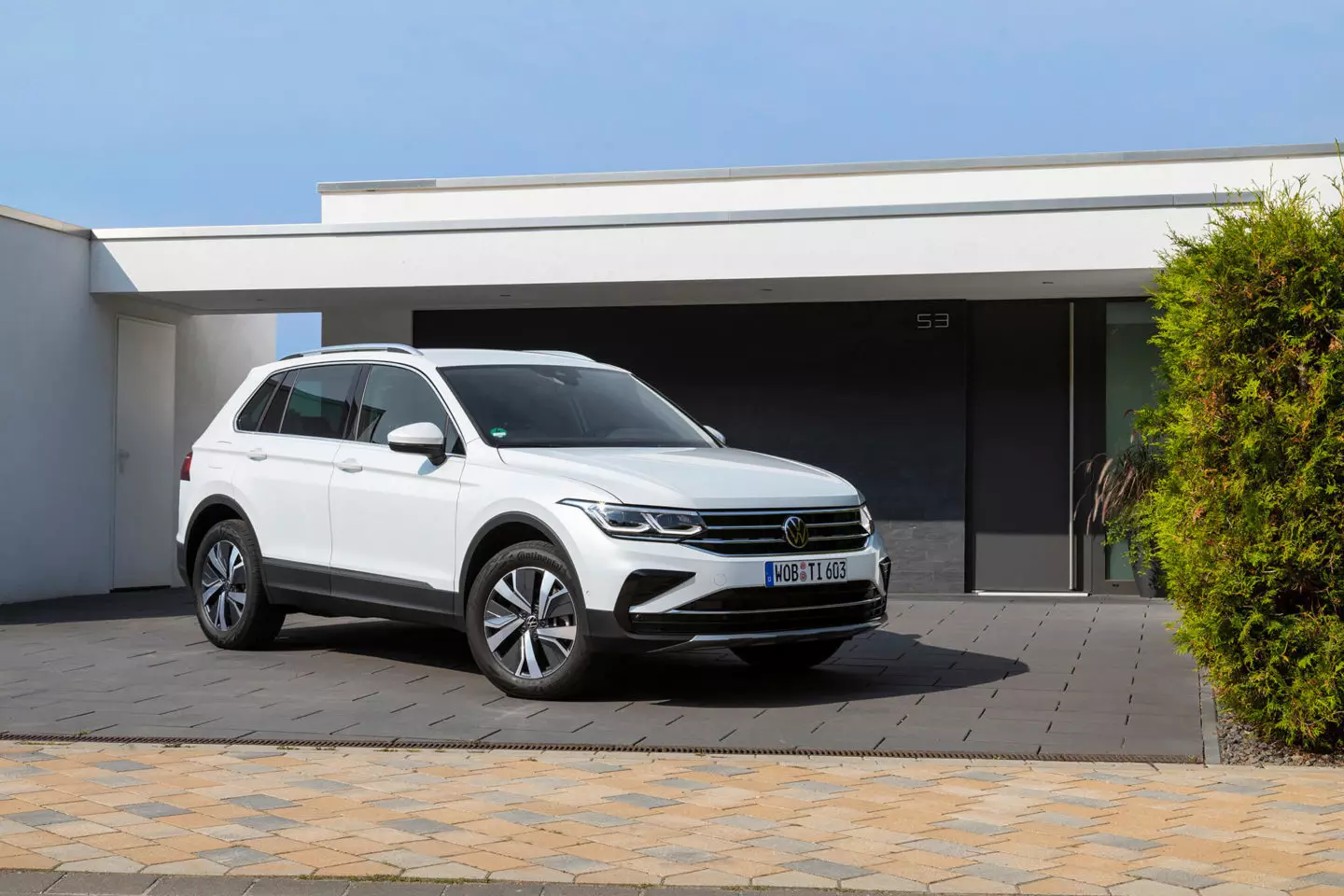
Inside, the dashboard has been improved thanks to the new electronics platform MIB3 which has drastically reduced the number of physical controls as we've seen in all cars based on the latest generation MQB platform, starting with the Golf.
Subscribe to our newsletter
And it also has new engine variants, such as the R sports version (with a 2.0 l and 320 hp 4-cylinder block) and the plug-in hybrid — the Tiguan eHybrid that serves as the motto for this first contact.
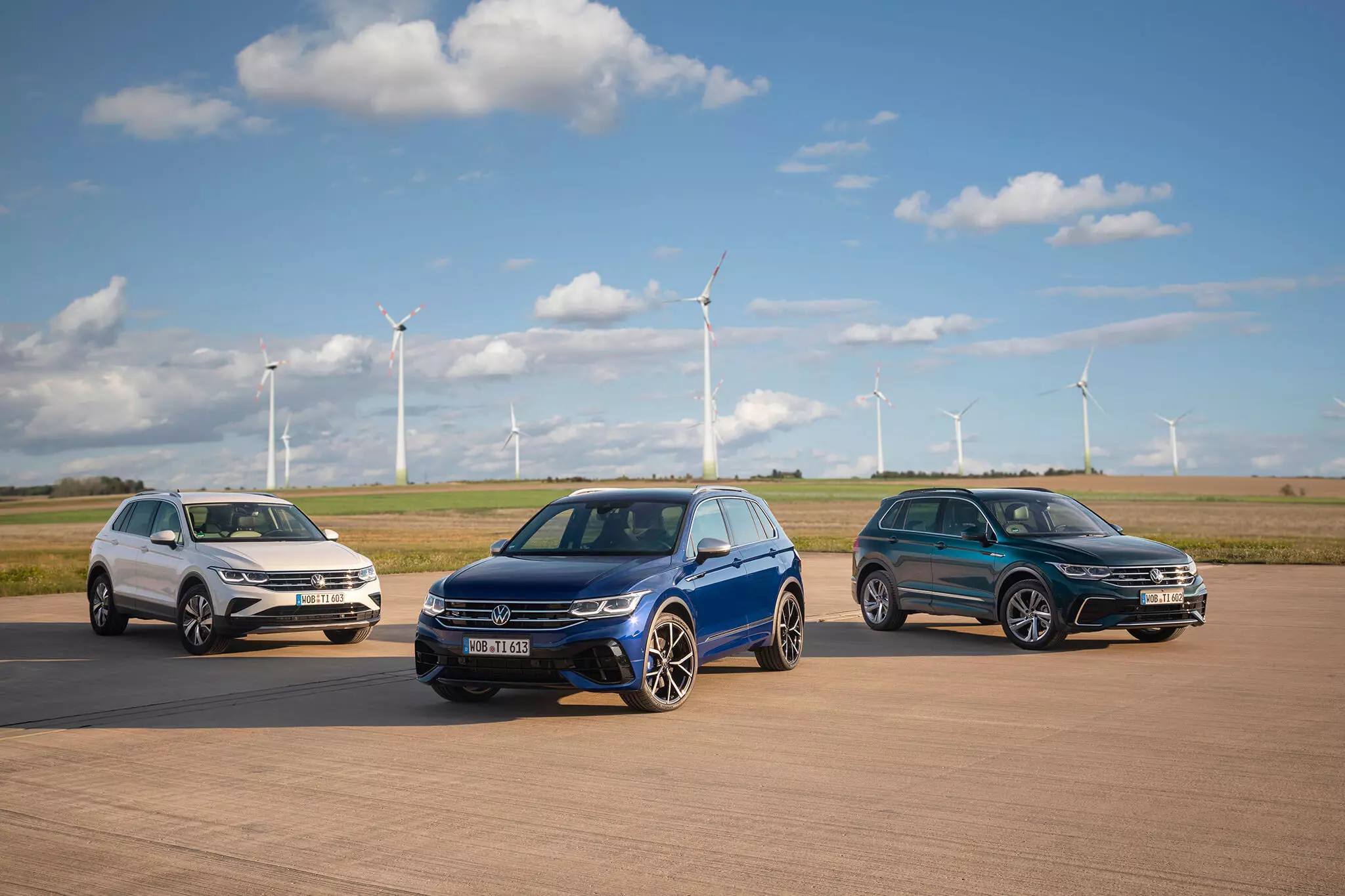
Variety of instrumentation, very connected
Before focusing on this Tiguan eHybrid, it's best to take a quick look inside, where there might be an infotainment system with a rather small screen — 6.5″ —, an acceptable 8″, or a more convincing 9.2″ screen . Most of the physical controls are now found on the new multifunctional steering wheel and also around the gearbox selector.
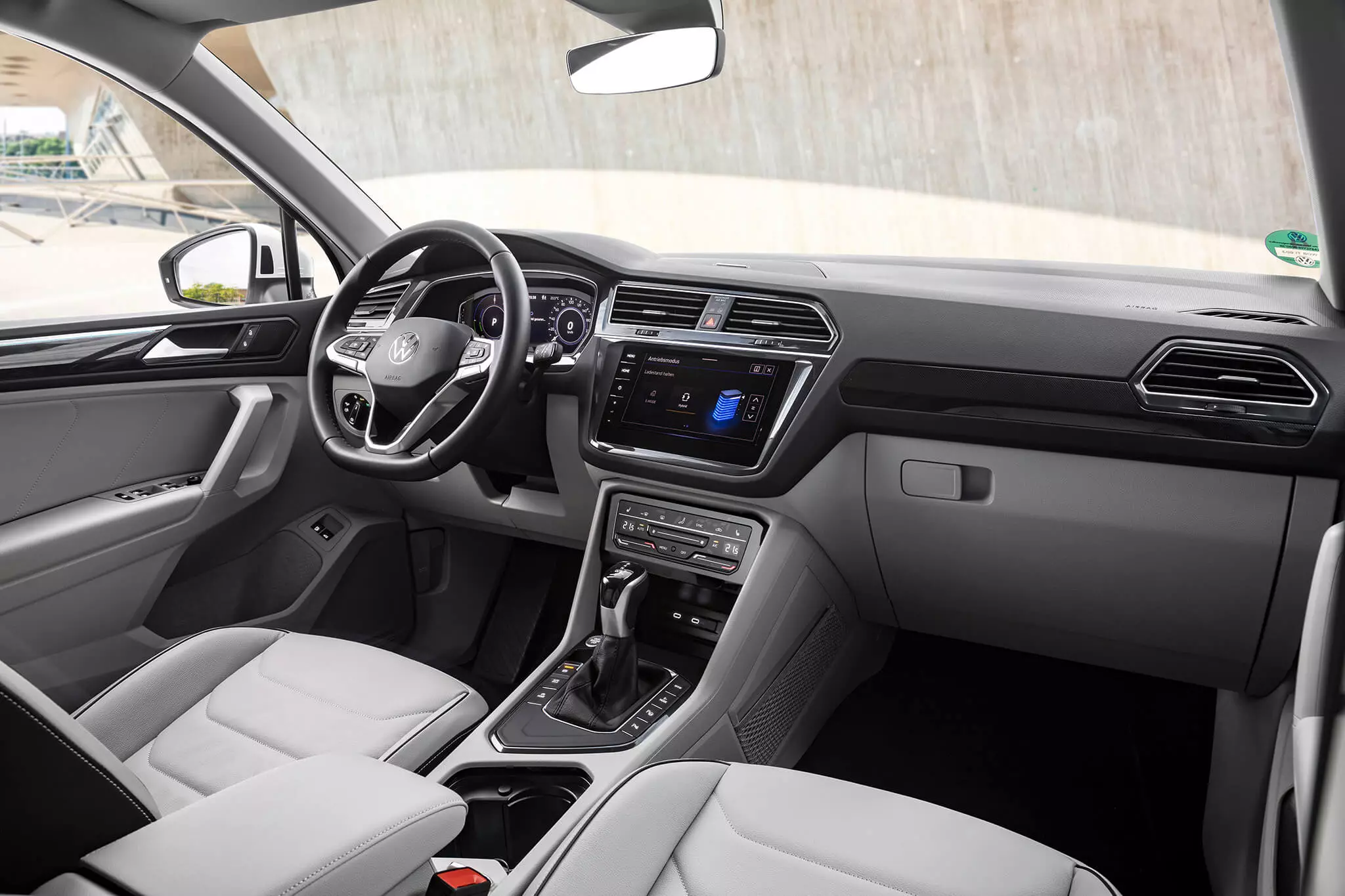
There is more than one type of instrumentation, the most advanced being the 10” Digital Cockpit Pro which can be customized in design and content to suit everyone's preferences, providing everything there is to know about battery status, flows of energy, consumption, autonomy, etc.
Connected features have multiplied and smartphones can be integrated into the car's communication system without hanging cables, to make the cabin tidier.
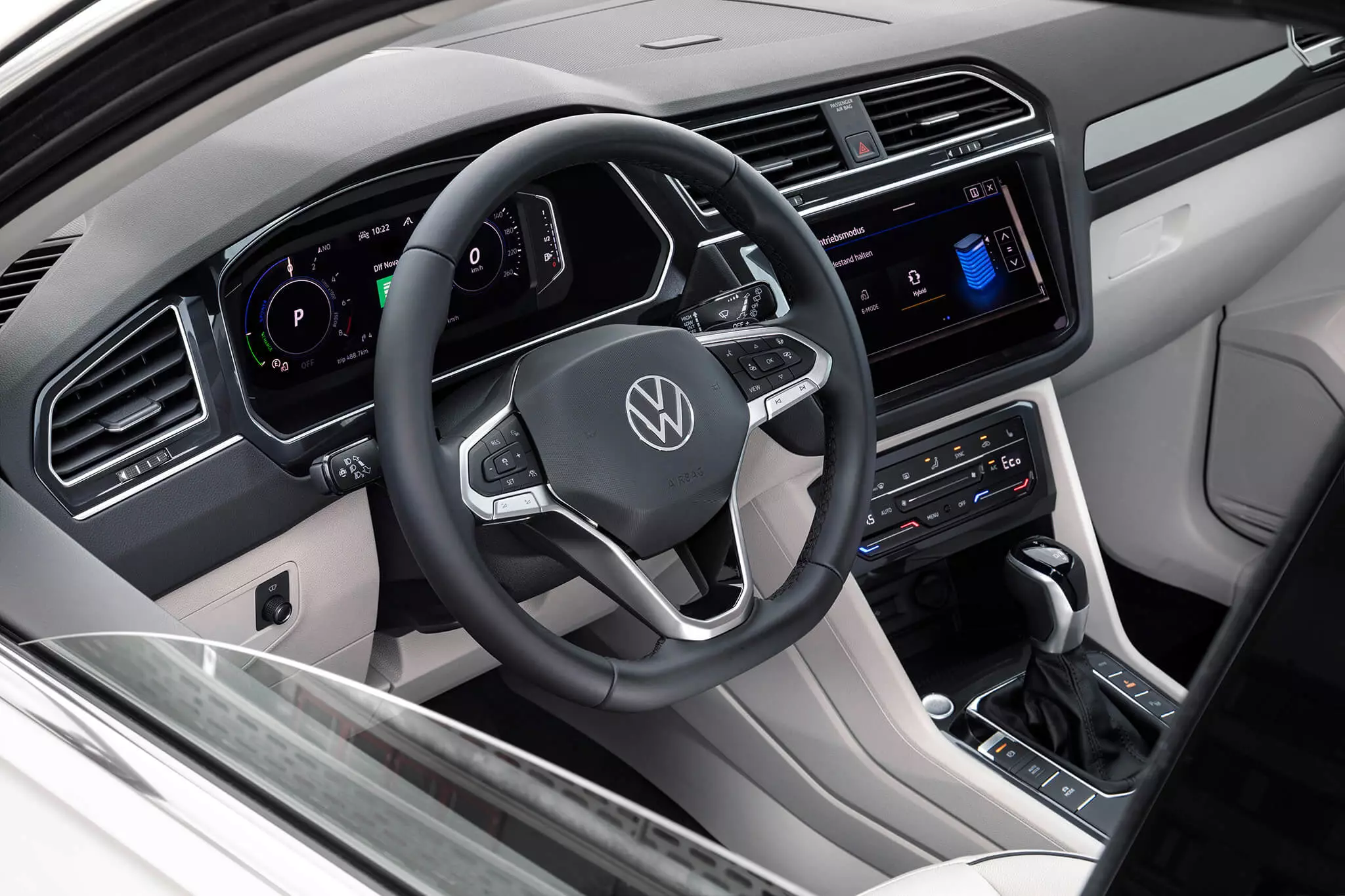
The dashboard surface has many soft-touch materials, although not as convincing as those on the Golf, and the door pockets have lining on the inside, which prevents the unpleasant noises of loose keys that we deposit inside when the Tiguan is on the move. It's a quality solution that even some high-end or premium cars don't have, but it's not matched by the lining of the glove box or the dashboard-mounted compartment, to the left of the steering wheel, entirely in raw plastic on the inside.
Trunk loses go underground
Space is ample for four people, while a third center rear passenger will be bothered by the voluminous floor tunnel, as is customary in non-electric Volkswagen vehicles.
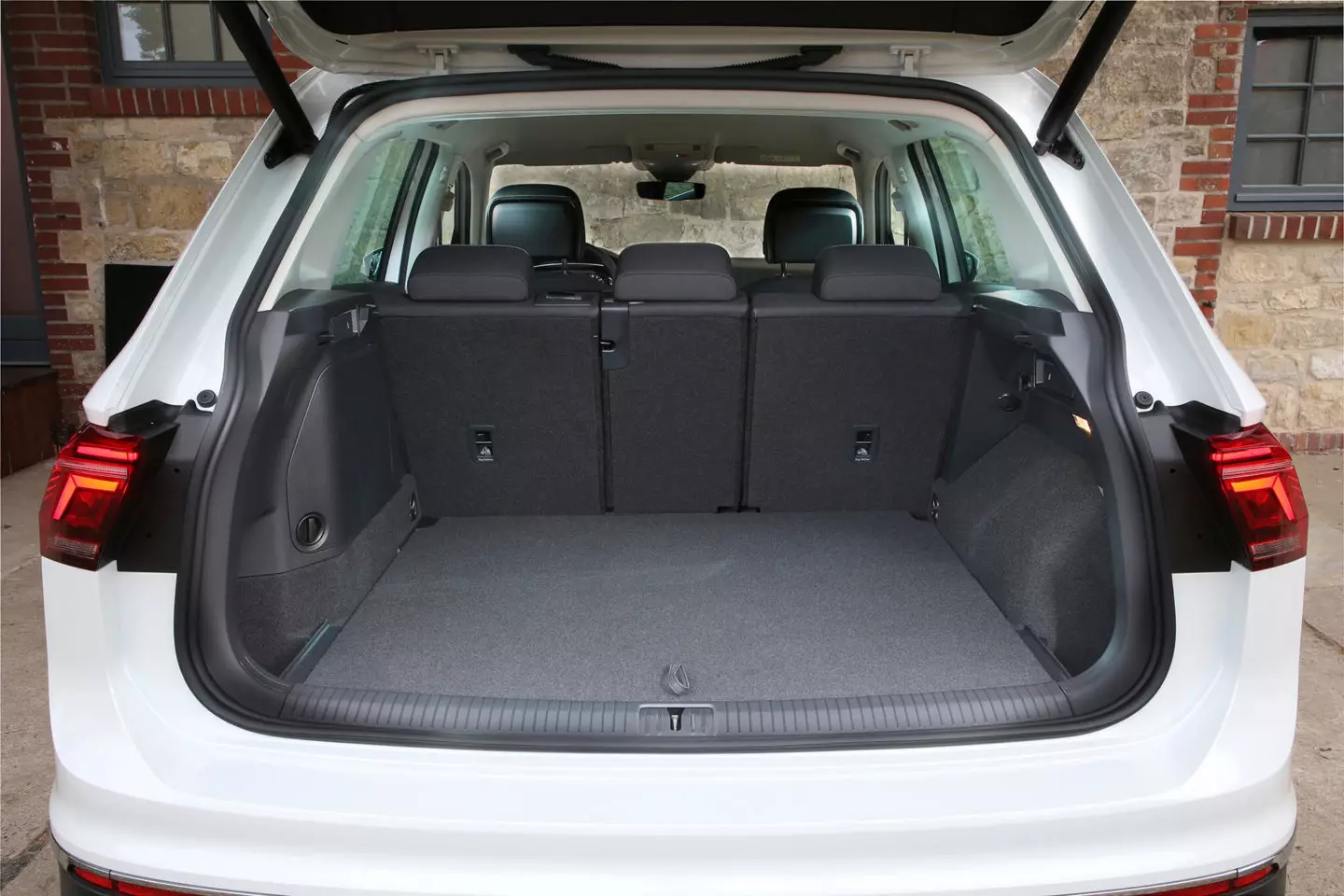
The tailgate can now open and close electrically (optional), but on this Tiguan eHynbrid the luggage compartment yields 139 liters of its volume (476 l instead of 615 l) due to the placement of the fuel tank that had to invade the luggage compartment space to give way to the lithium-ion battery (the good news is that the case's shape hasn't been hampered by the hybrid component system).
The plug-in module is almost the same (only the electric motor is 8 hp more powerful) as the one used by the Golf GTE: the 1.4 l gasoline turbo engine produces 150 hp and is coupled to the six-speed dual-clutch automatic transmission , which also integrates the 85 kW/115 hp electric motor (the total power of the system is 245 hp and 400 Nm, as in the new Golf GTE).
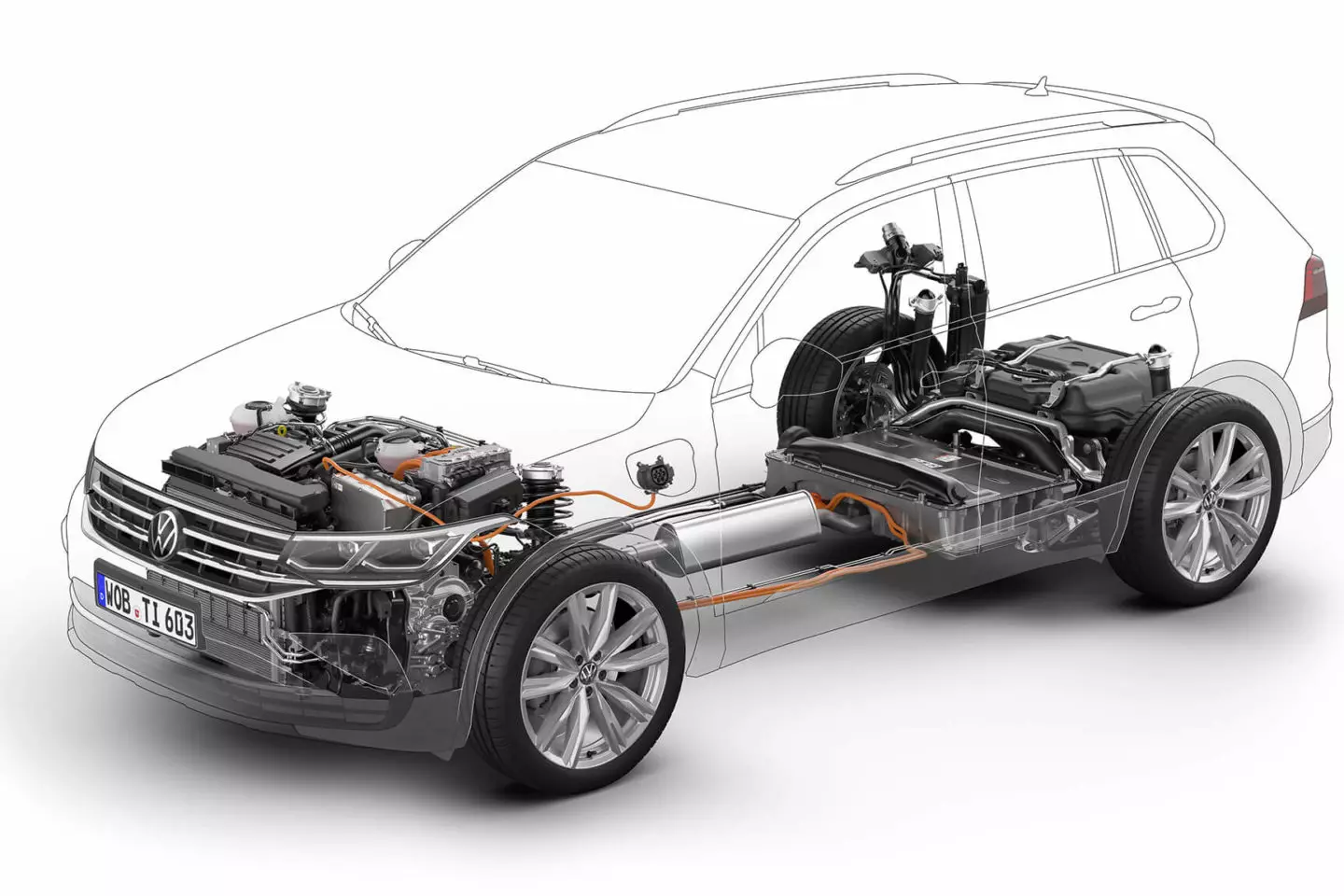
The 96-cell battery that experienced a significant increase in energy density from GTE I to GTE II, increasing its capacity from 8.7 kWh to 13 kWh, allows an autonomy of “a” 50 km (still being homologated), processes in which Volkswagen became very careful after the Diesel scandal in which it was involved.
Simplified driving programs
Since the launch of its first plug-in hybrids, Volkswagen has reduced the number of driving programs: there is the E-Mode (only electric movement, as long as there is enough “energy” in the battery) and the Hybrid that combines the energy sources (electric and combustion engine).
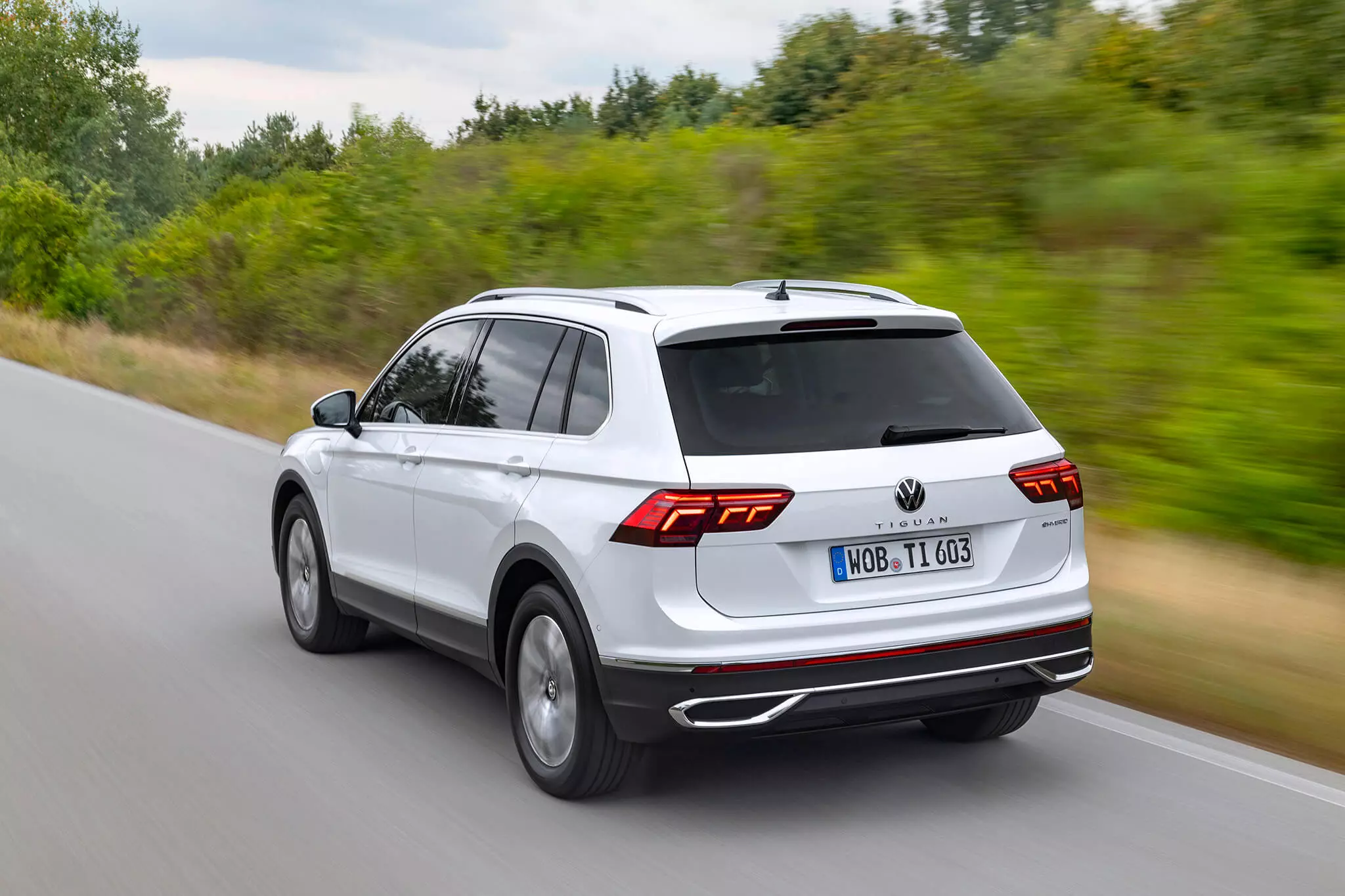
Hybrid mode integrates the Hold and Charge submodes (previously independent) so that it is possible to reserve some battery charge (for city use, for example, and which can be adjusted by the driver in a specific menu) or to charge the battery with the engine gasoline.
Battery charge management is also done with the help of the navigation system's predictive function, which provides topographical and traffic data so that the intelligent hybrid system can dose energy consumption in the most rational way.
Then there are the Eco, Comfort, Sport and Individual driving modes, with intervention in the response of the steering, engine, gearbox, sound, air conditioning, stability control and the variable damping system (DCC).
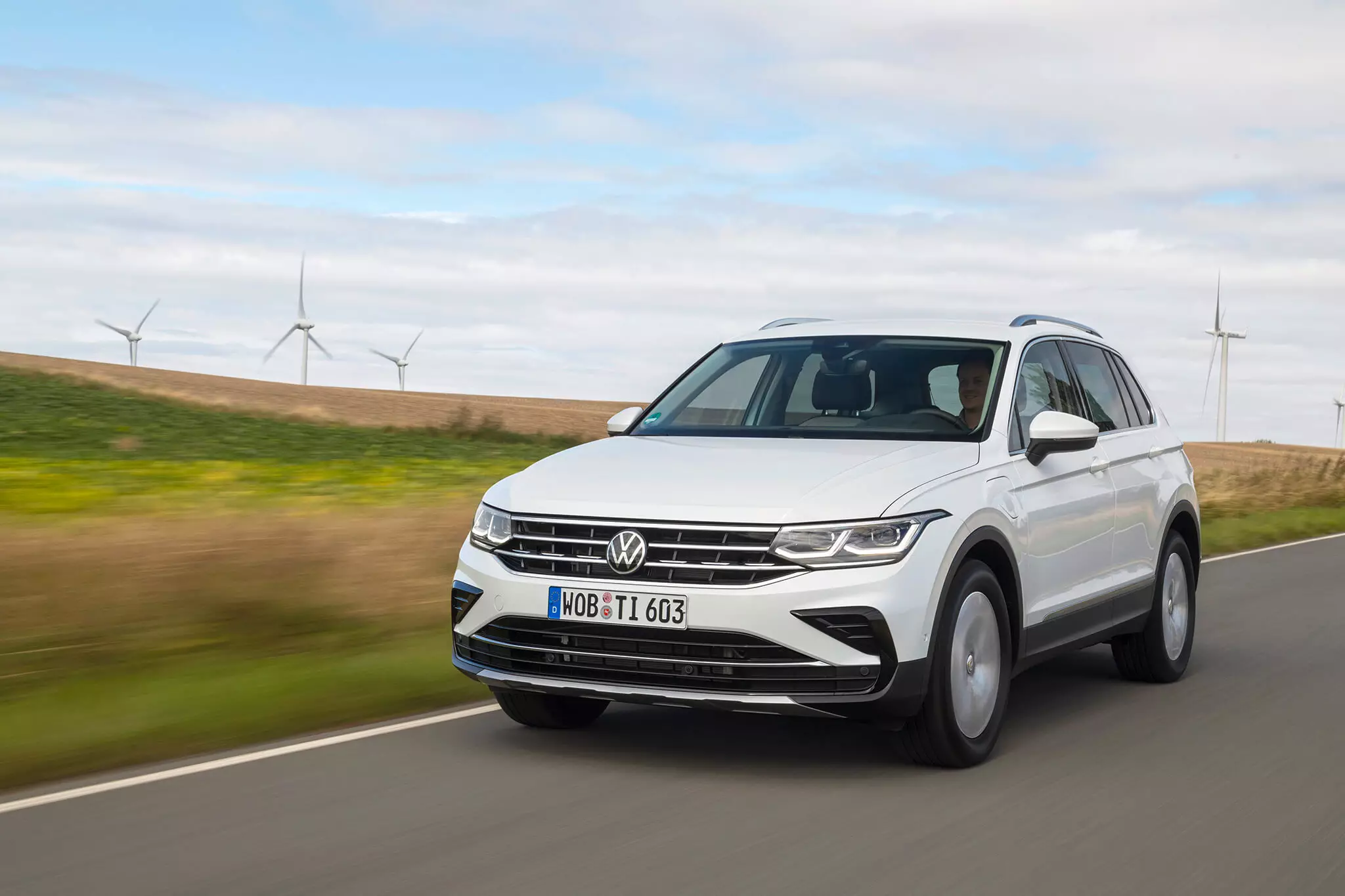
There is also the GTE mode (the Golf has been integrated into the Sport mode) which can be switched on by a separate, semi-hidden button to the right of the gearbox lever in the center console. This GTE mode takes advantage of the best of the combined power sources (combustion engine and electric motor) to transform the Tiguan eHybrid into a truly dynamic SUV. But it doesn't even make much sense because if the driver steps down on the accelerator, he will get a very similar response from the propulsion system, which becomes quite noisy and somewhat harsh in this type of use, undermining the silence that is one of the attributes appreciated by hybrids plugin.
Electric up to 130 km/h
The start is always done in electric mode and continues like this until a stronger acceleration happens, or if you exceed 130 km/h (or the battery starts to run out of charge). A presence sound is heard that does not come from the electrical system, but digitally generated so that pedestrians are aware of the presence of the Tiguan eHybrid (in garages or even in urban traffic when there is little ambient noise and up to 20 km/h).

And, as always, the initial acceleration is instantaneous and strong (it should reach 0 to 100 km/h in about 7.5s and a top speed in the order of 205 km/h, also here, estimates in both cases). Recovery performance is, as usual on plug-in hybrids, even more impressive, courtesy of 400Nm of torque delivered “over the head” (for 20s, to avoid excessive power usage).
The road behavior is balanced and progressive, even though you can feel the 135 kg added by the battery, especially in stronger lateral mass transfers (ie negotiated corners at higher speeds).
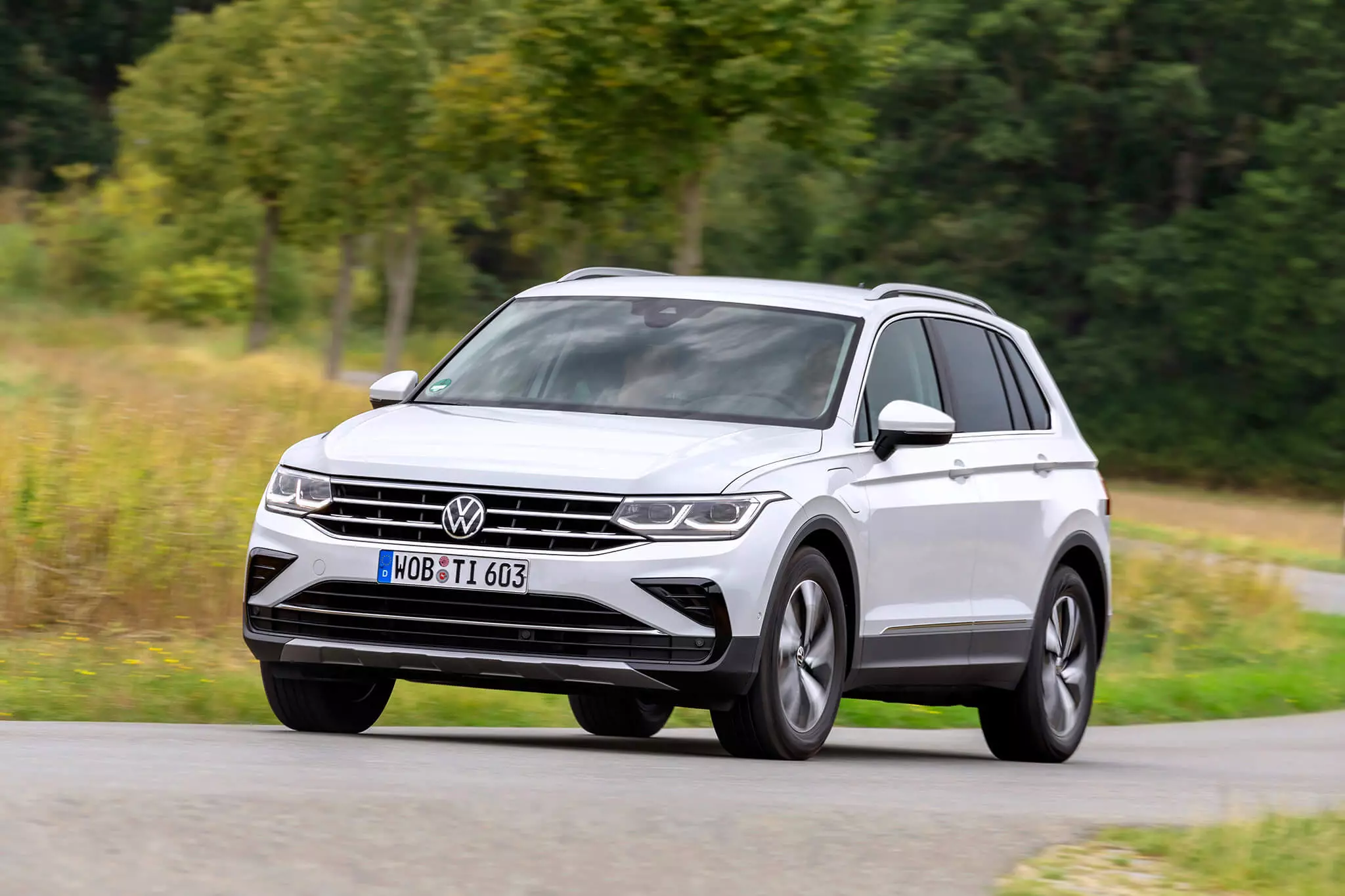
The balance between stability and comfort can be regulated by the driving modes on the versions with variable damping (like the one I drove), but it's probably a good idea to avoid wheels larger than 18″ (20″ is the maximum) and low profile tires that will harden the suspension beyond what is reasonable.
What really pleases you are the seamless transitions between engine (gasoline) on and off and the ease of use with simplified modes, in addition to the response of the automatic transmission, which is smoother than in applications with combustion-only engines.
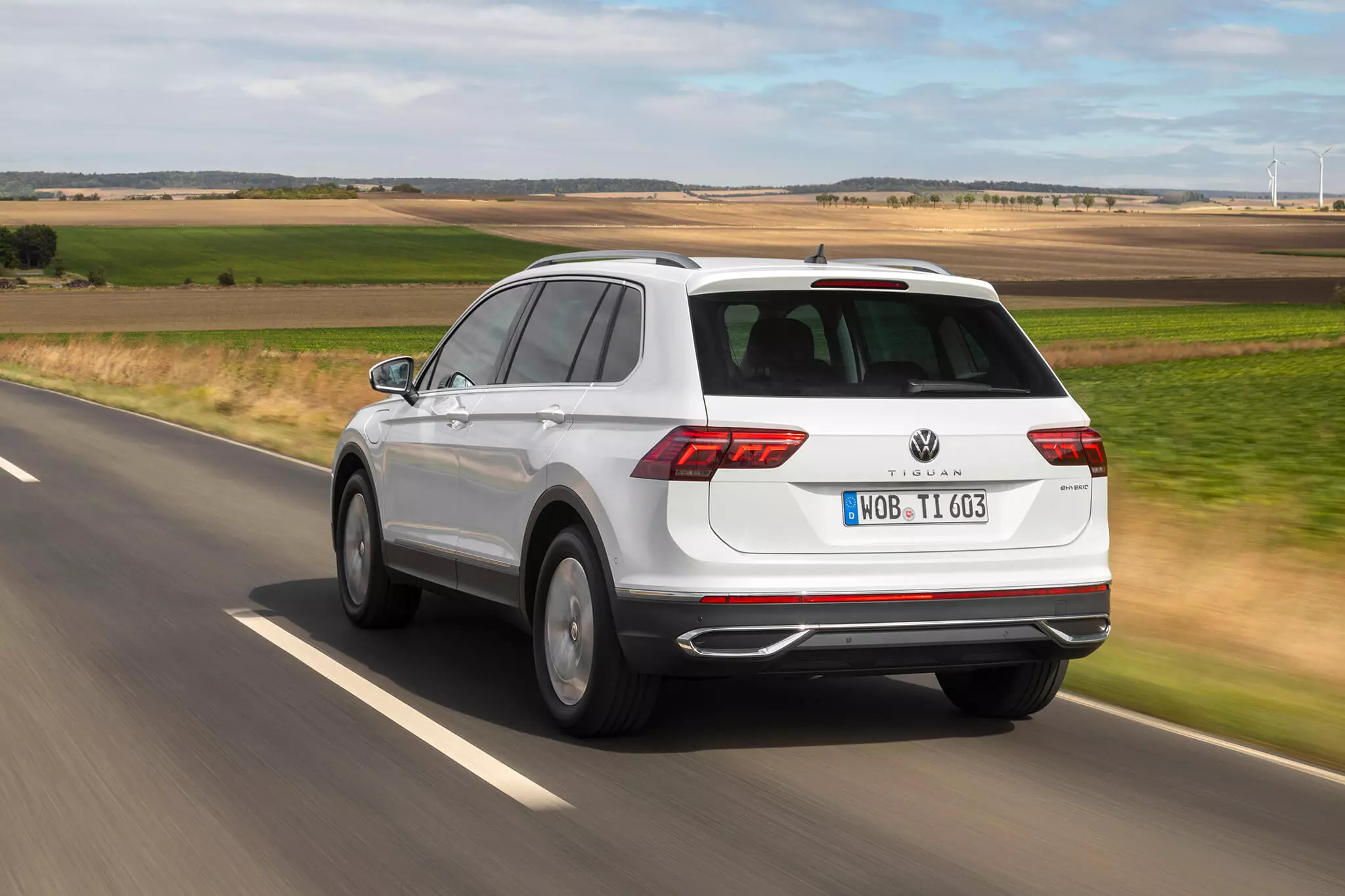
For some drivers it will be possible to run “battery-powered” several days a week (most Europeans travel less than 50 km a day) and this autonomy can even be extended if most of the trip is made in stop-and-go, in which case it is more intense the energy recovery (you can even end the trip with more battery than when it started).
In practice
In this test I did an urban route of 31 km during which the engine was turned off for 26 km (84% of the distance), leading to an average consumption of 2.3 l/100 km and 19.1 kWh/100 km and at the end , the electric range was 16 km (26+16, close to the promised electric 50 km).
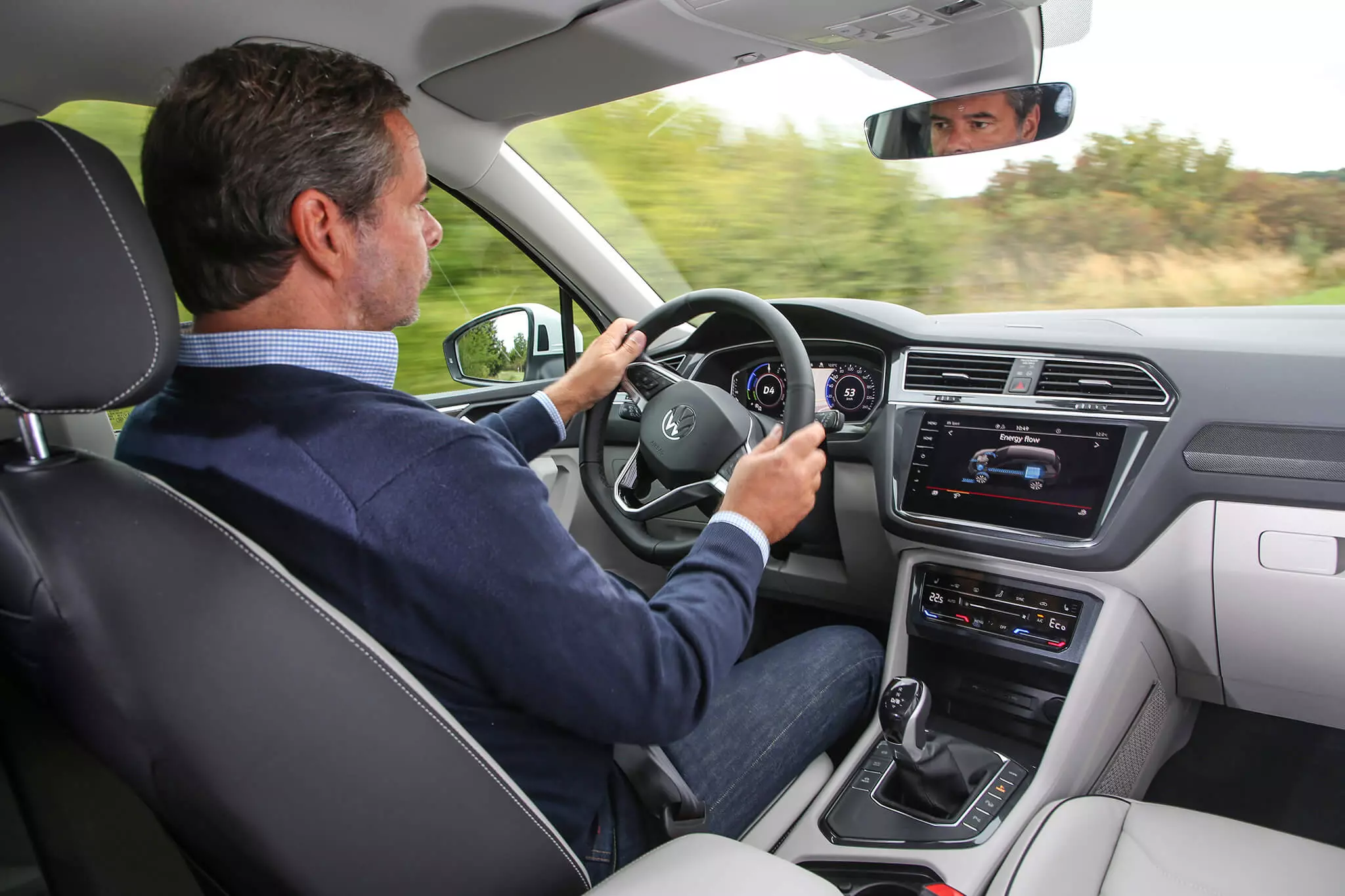
In a longer second lap (59 km), which included a stretch of motorway, the Tiguan eHybrid used more gasoline (3.1 l/100 km) and less battery (15.6 kWh/100 km) also due to the fact that this have been empty before the end of the course.
As there are currently no official data, we can only extrapolate the Golf GTE numbers and calculate an official average consumption of 2.3 l/100 km (1.7 in the Golf GTE). But, of course, on long trips, when we go well beyond electric range and the battery charge is depleted, gasoline consumption will likely reach double-digit averages, compounded by the car's weight (about 1.8 t).
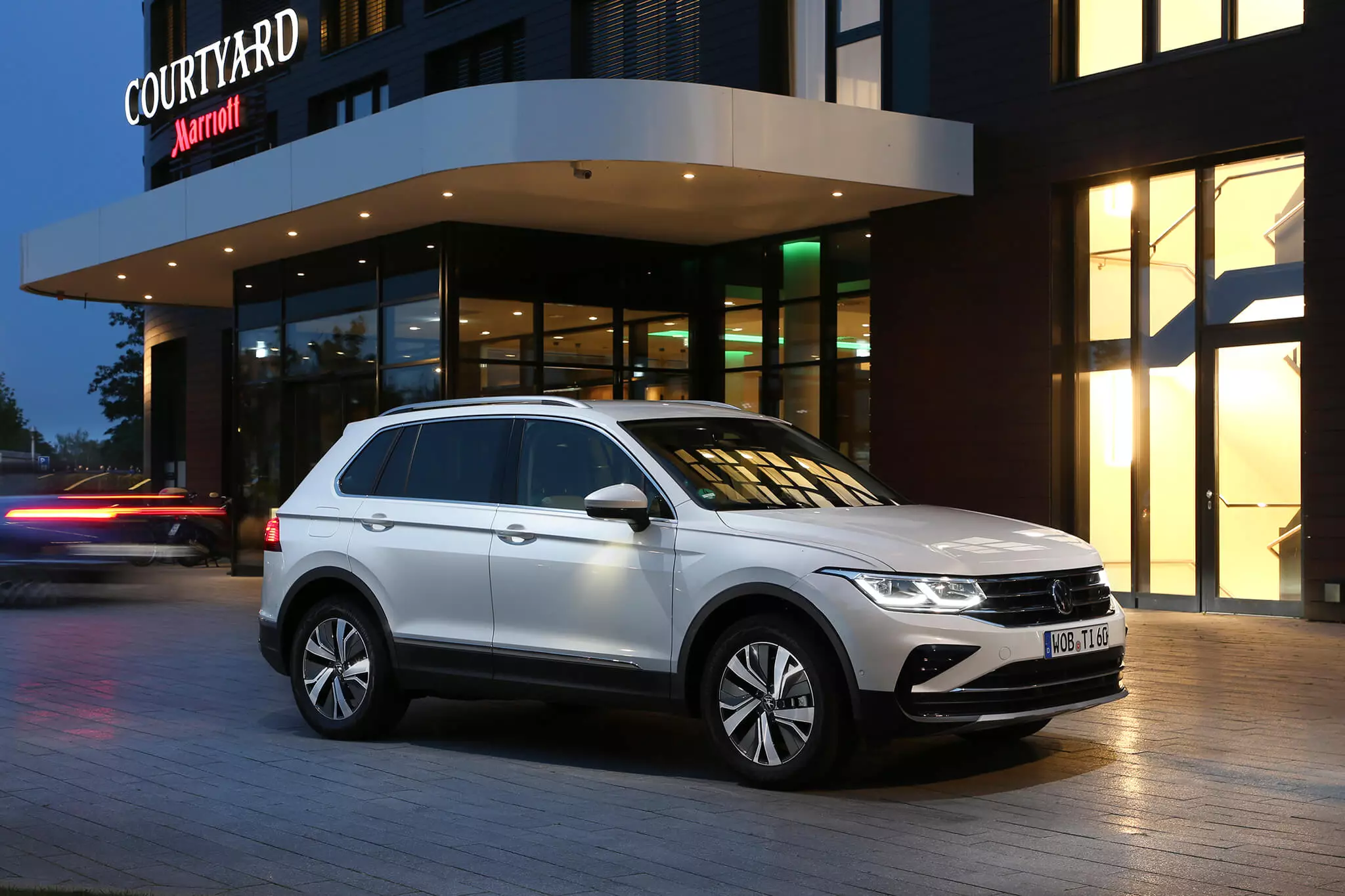
A word for the (few) interested in a 4×4 compact SUV. The Tiguan eHybrid won't suit them because it's only pulled by the front wheels (as well as the Mercedes-Benz GLA 250e), and should turn to other options like the Toyota RAV4 PHEV, the BMW X1 xDrive25e or the Peugeot 3008 Hybrid4, which add traction electric rear.
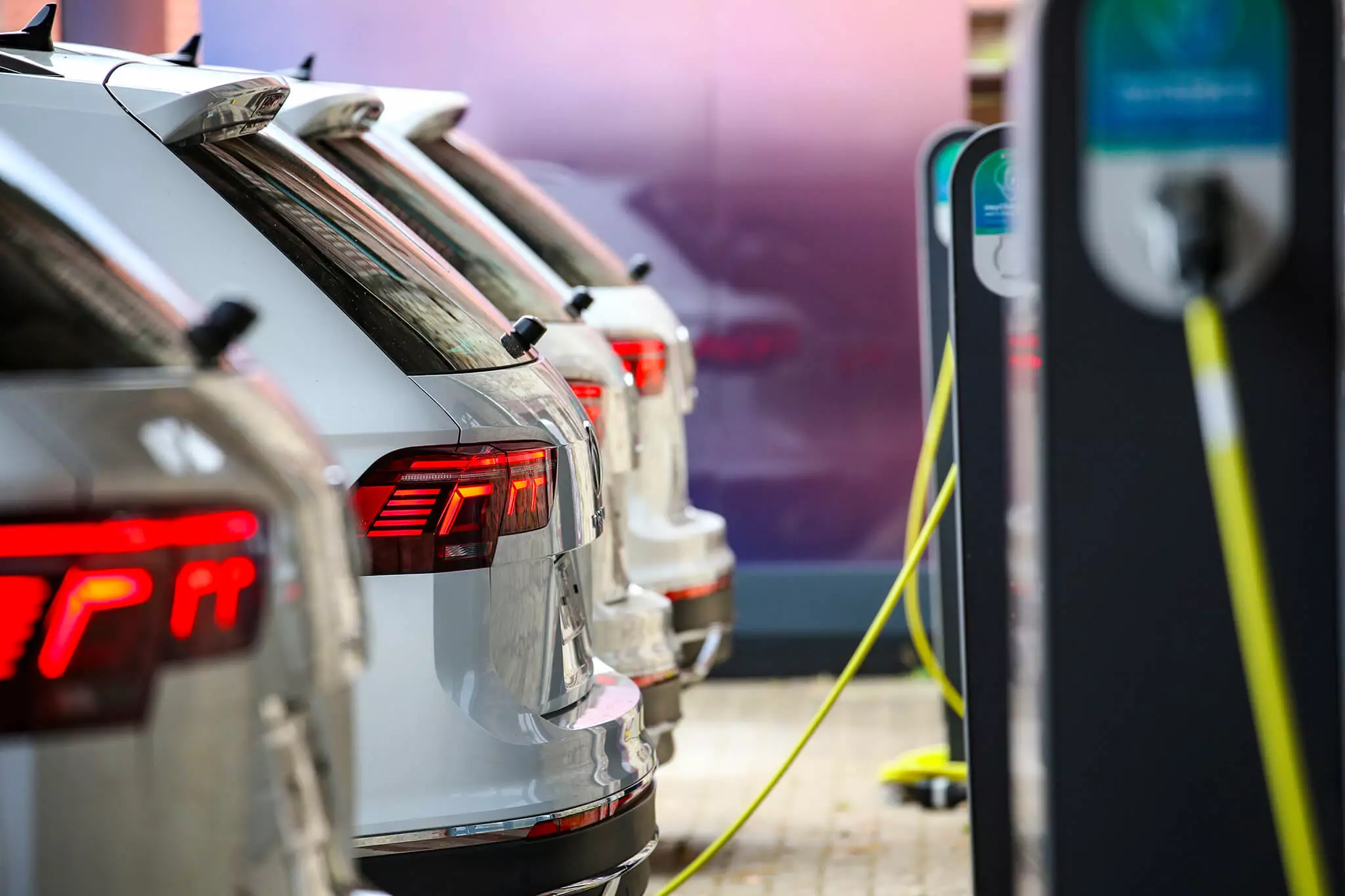
Technical specifications
| Volkswagen Tiguan eHybrid | |
|---|---|
| MOTOR | |
| Architecture | 4 cylinders in line |
| Positioning | Front Cross |
| Capacity | 1395 cm3 |
| Distribution | DOHC, 4 valves/cil., 16 valves |
| Food | Injury direct, turbo |
| power | 150 hp between 5000-6000 rpm |
| Binary | 250 Nm between 1550-3500 rpm |
| ELECTRIC MOTOR | |
| power | 115 hp (85 kW) |
| Binary | 330 Nm |
| MAXIMUM COMBINED YIELD | |
| Maximum Combined Power | 245 hp |
| Maximum Combined Binary | 400Nm |
| DRUMS | |
| Chemistry | lithium ions |
| cells | 96 |
| Capacity | 13 kWh |
| Loading | 2.3 kW: 5h; 3.6 kW: 3h40min |
| STREAMING | |
| Traction | Forward |
| Gear box | 6 speed automatic, double clutch |
| Chassis | |
| Suspension | FR: Independent McPherson; TR: Independent multi-arm |
| brakes | FR: Ventilated discs; TR: Solid disks |
| Direction / Turns behind the wheel | Electrical assistance/2.7 |
| Dimensions and Capabilities | |
| Comp. x Width x Alt. | 4.509 m x 1.839 m x 1.665 m |
| Between axles | 2,678 m |
| trunk | 476 l |
| Deposit | 40 l |
| Weight | 1805 kg* |
| Installments, Consumptions, Emissions | |
| Maximum speed | 205 km/h* |
| 0-100 km/h | 7.5s* |
| mixed consumption | 2.3 l/100 km* |
| CO2 emissions | 55 g/km* |
*Estimated values
